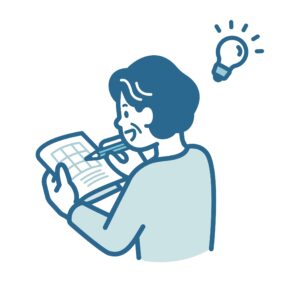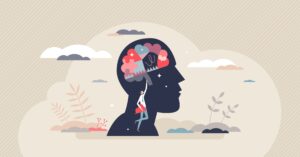
Discover What are Cognitive Learning Styles
Consider a problem you recently encountered. How did you solve it? Did you need to visualize the solution or were you likely to verbalize your thought process aloud? These questions all pertain to cognitive learning styles—a term used to describe the way an individual processes information from the world around them. Cognitive learning style is influenced by personality, environment, culture, and social interactions. Read further to understand more about your cognitive learning style, as well as how to develop your learning habits.

What Is Cognitive Learning Style?
Thoughts, experiences, the five senses (i.e. sight, touch, smell, hear, and taste)—they are all ways in which we take in information from our environment and interactions with others. The mental action of acquiring that information is known as cognition. It is related to a term called cognitive learning style.
Cognitive learning style describes an individual’s habits of processing environmental stimuli (information). Cognitive learning style simply indicates the tendencies of certain behaviors that occur during thinking and learning.
Each person is truly unique. How our brain forms from an early age demonstrated the different ways in how our development may effect the way we absorb, process, and learn new information. There are many different cognitive learning styles, lets discuss each one that have been identified to date and explore the benefits and possible drawbacks of each one.
Learning Style and Personality
Cognitive learning style is, in essence, a personality component. Leading institutions have used the Myers Briggs personality testing to connect specific personality types with learning processes. For example, someone who is extraverted and outgoing may not learn best through auditory learning where they are required to listen for long periods. Instead, hands-on-learning with plenty of social interaction is optimal. These variances in learning styles amongst people influence their attitudes, values, and relationships.
Why is Cognitive Learning Style Important?
Knowing an individual’s cognitive learning style is critical to learn at one’s full potential. The concept is applied to many settings, especially in education. Cognitive learning develops the capacity to think abstractly, which is important in a classroom. Rather than memorization, students who are aware of their cognitive learning style are able to fully comprehend the information they have learned. They understand the reasons behind complex topics and are more likely to retain information to further build on that knowledge. Training our cognitive skills can also help our cognitive learning styles. CogniFit trains up to 23 different cognitive skills.
Types of Cognitive Learning Styles: Visual
As the name suggests, the visual learning style encompasses learning through the sense of sight. To effectively learn, a visual learner needs to visualize the information. They learn best by visualizing images, pictures, maps, and diagrams to organize and process learning material. This occurs by various visual attributes: spatial awareness, photographic memory, color or tone, and brightness or contrast. Visual learners can easily imagine their ideas to bring them to life, as they are skilled with imagery.
Personality habits of visual learners include being focused and well organized in planning. Many are not very talkative, yet are prone to frequent daydreaming. They have a good memory for faces and facts that are conveyed in images but tend to forget faces and verbalized information.
Types of Cognitive Learning Styles: Auditory
Auditory learning is a type of cognitive learning style in which the individual learns by hearing or listening. They are very successful in the typical classroom lecture setting and excel at oral presentations, following verbal directions, and explaining topics aloud. Most auditory learners are talkative. In conversation, they are intuitive to changes in tone that underlie the meaning of speech.
Types of Cognitive Learning Styles: Kinesthetic
The kinesthetic learning style is a tactile, hands-on approach to learning. It is an active form of learning based on physical activities rather than reading text or listening to a lecture/presentation. To learn through the sense of touch, incorporating motions into teaching new information increases understanding. Kinesthetic learners possess energetic, creative personalities. They are skilled in physical activities like sports and have developed coordination.

Types of Cognitive Learning Styles: Reading/Writing
The cognitive learning style reading and writing refers to a preference for learning through words. It emphasizes the importance of understanding the words used in what the individual is expected to know. Reading and writing learners best process information by utilizing glossaries, reading notes, and arranging lists of words into questions. They often enjoy reading and demonstrating comprehension of abstract topics expressed in their writing.
Types of Cognitive Learning Styles: Field Dependent Versus Independent Model
Developed by psychologist Herman Witkin in 1962, field-independent versus independent model is a concept in cognitive learning styles. Field independence is marked by the ability to separate details from context. Field independent learners are independent. They are highly focused, working best individually while relying less on peer groups to process information. Reading and writing are two skills field-independent learners excel in because they can be performed alone without intervention from others.
Contrarily, field-dependent learning is characterized by the inability to separate details from context. In field-dependent learning, information is one “big picture.” Field dependent learners struggle to isolate the details that form the whole. These learners work most effectively in groups or with teacher support. They have strong interpersonal relationships and function well as part of a team. Although not as focused on field-independent learners, they exceed in processing information orally.
Types of Cognitive Learning Styles: Reflection Versus Impulsivity
The cognitive learning model of reflection versus impulsivity was created by psychologist Jerome Kagan in 1958. This cognitive style can be determined by the ways someone approaches a problem. Those who display reflectivity in their learning consider alternative solutions, whereas impulsivity is spontaneously responding to a problem with little thought of the various possible solutions and their outcomes.
Studies show these differences in learning begin in pre-school years. In a classroom setting, reflective learners are conscientious. They do not rush to complete their assignments, taking time to ensure its accuracy. Impulsive learners make more mistakes and turn in their assignments quickly.
Types of Cognitive Learning Styles: Leveling Versus Sharpening
Leveling versus sharpening pertains to the cognitive skill of memory. The two learning variances differ in how an individual uses memories to process information. Those who apply to level to their learning apply numerous memories and prior knowledge to organize the new information. However, learners who lean towards sharpening depend on fewer memories to assimilate information. Studies reveal that sharpeners are more accurate in the information they are learning at present. This is because levelers blend so many pieces of their memories with the information they are expected to learn that some may be inaccurate.
Types of Cognitive Learning Styles: Scanning
The learning style known as scanning refers to individual differences in a cognitive skill known as attention. Whether relevant or irrelevant to the information to be learned, scanners direct their attention to all features of their environment. They have a broader view of a problem.
Types of Cognitive Learning Styles: Serialist Versus Holist
Serialist versus holist is a cognitive learning style stemming from Gordon Pask’s conversation theory. Serialist learners learn linearly in a sequential manner. Learning tasks are worked systematically one at a time. These learners are overwhelmed by excessive details, as it distracts from the task at hand. They prefer structured teaching.
Holists learn top-down, hierarchical fashion. They approach learning as a whole without breaking it down into sub-tasks. Overall, they work spontaneously. To process information, holists do not need structure and are able to think broadly about a subject.
How to Develop Your Cognitive Learning Style
While cognitive learning style differs from person to person, there are basic skills and techniques to develop your cognitive learning style:
- Explore new ideas—Learning involves comprehending ideas taken in from the world around you. One idea inevitably leads to another. Do not be afraid to investigate those resulting ideas, as they provide the opportunity to practice applying your unique learning style.
- Explain patterns of thinking—After learning occurs, explaining patterns of thinking displays a complete understanding of the subject. Being able to explain how you learn develops your potential to learn additional information.
- Refine cognitive skills—Cognitive skills entail attention, memory, logic, reasoning, and auditory and visual processing. Regardless of one’s learning style, these skills are necessary for you to take in information and apply it to daily life.
- Reflect on your learning experiences—Learning through your cognitive learning style means you must be intuitive about your learning habits. Reflect on instances when learning was successful as well as unsuccessful. What did you do? Is there something you could do differently in the future?
- Reduce stress—Excessive stress distracts the brain from processing other stimuli in the environment. Keep stress levels low for optimal learning.
- Sleep—The brain requires rest to heal and regenerate neurons (i.e. brain cells). Without proper rest at night, the brain cannot form the pathways for learning. Experts recommend 7 to 9 hours of sleep for the average adult.
- Exercise the brain—Play brain training games, solve puzzles, play board games, or read books. Activities that stimulate the brain build the brain pathways for learning.
References
Messick, S. (1989). Cognitive Style and Personality: Scanning and Orientation Affect. Princeton, New Jersey: Educational Testing Service.
Sternberg, R. (1997). Thinking Styles. Boston: Cambridge University Press.













